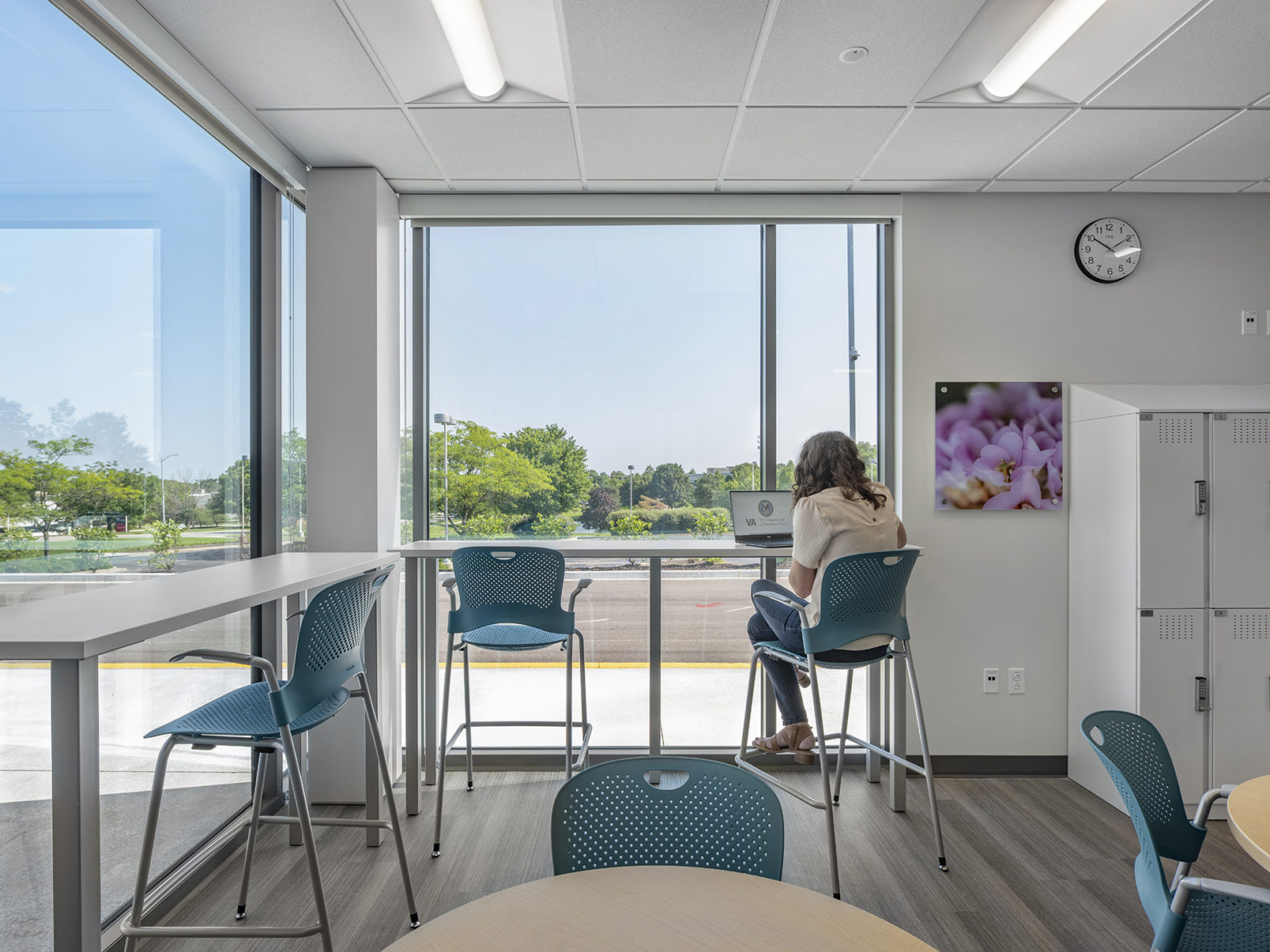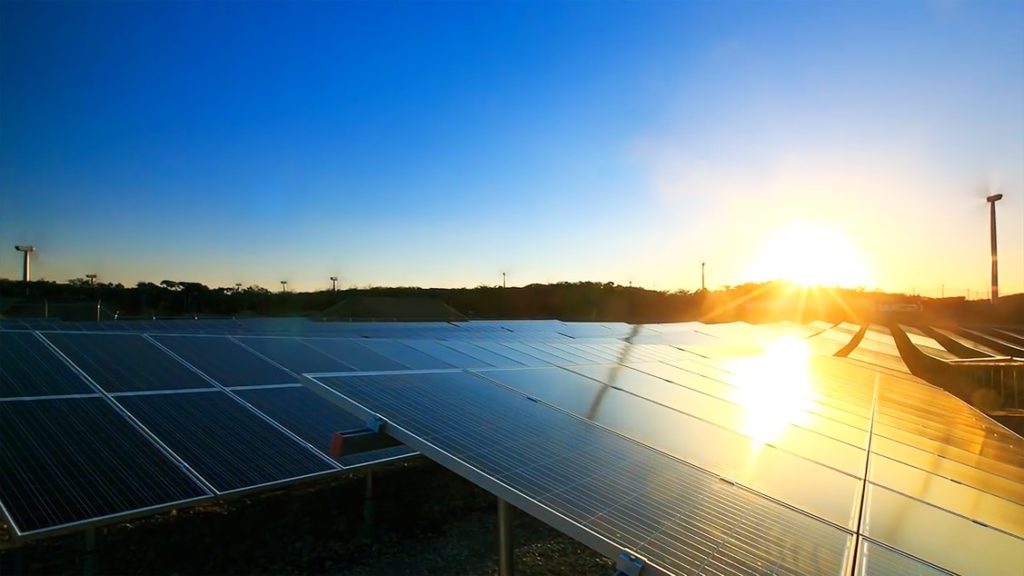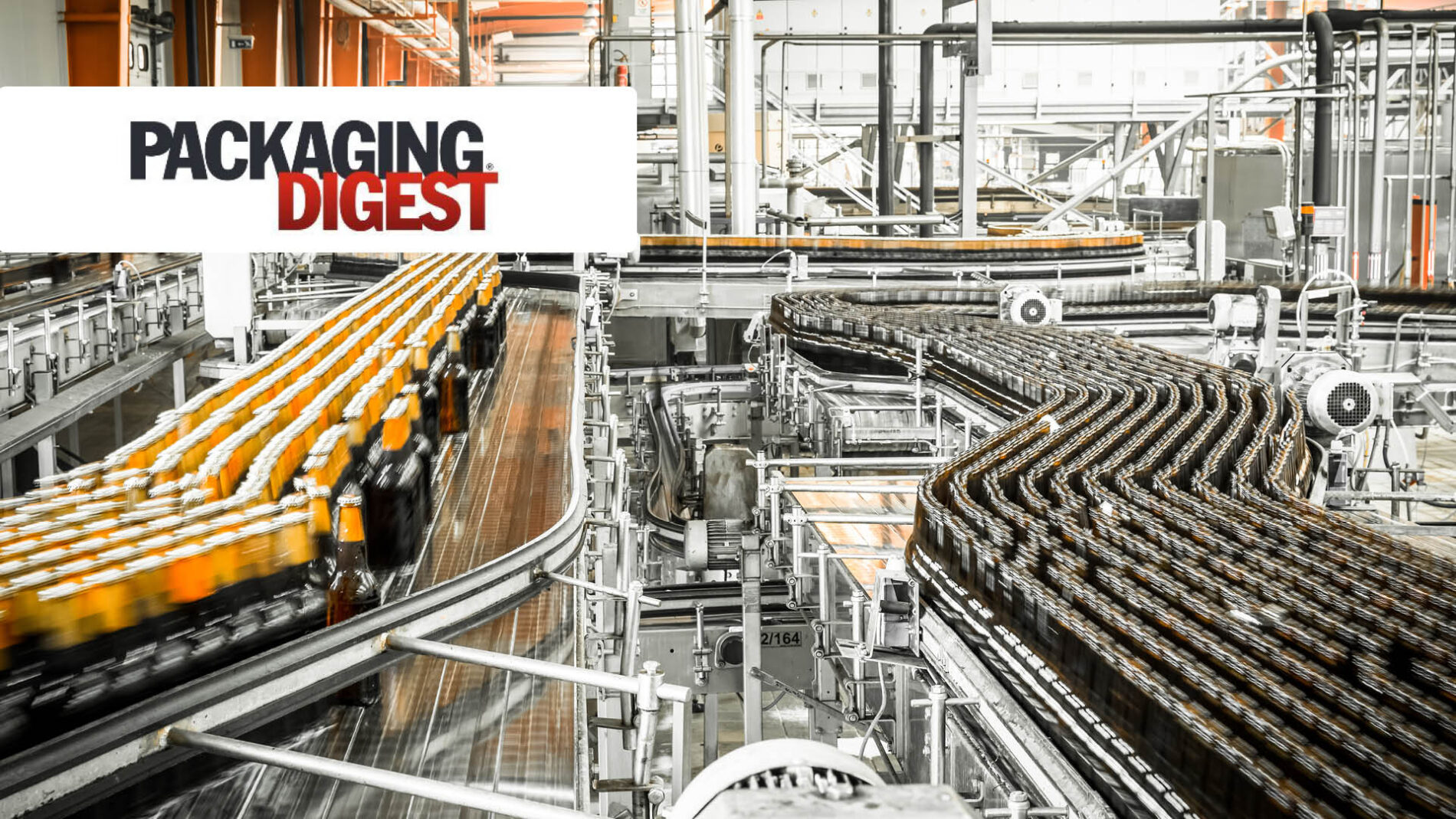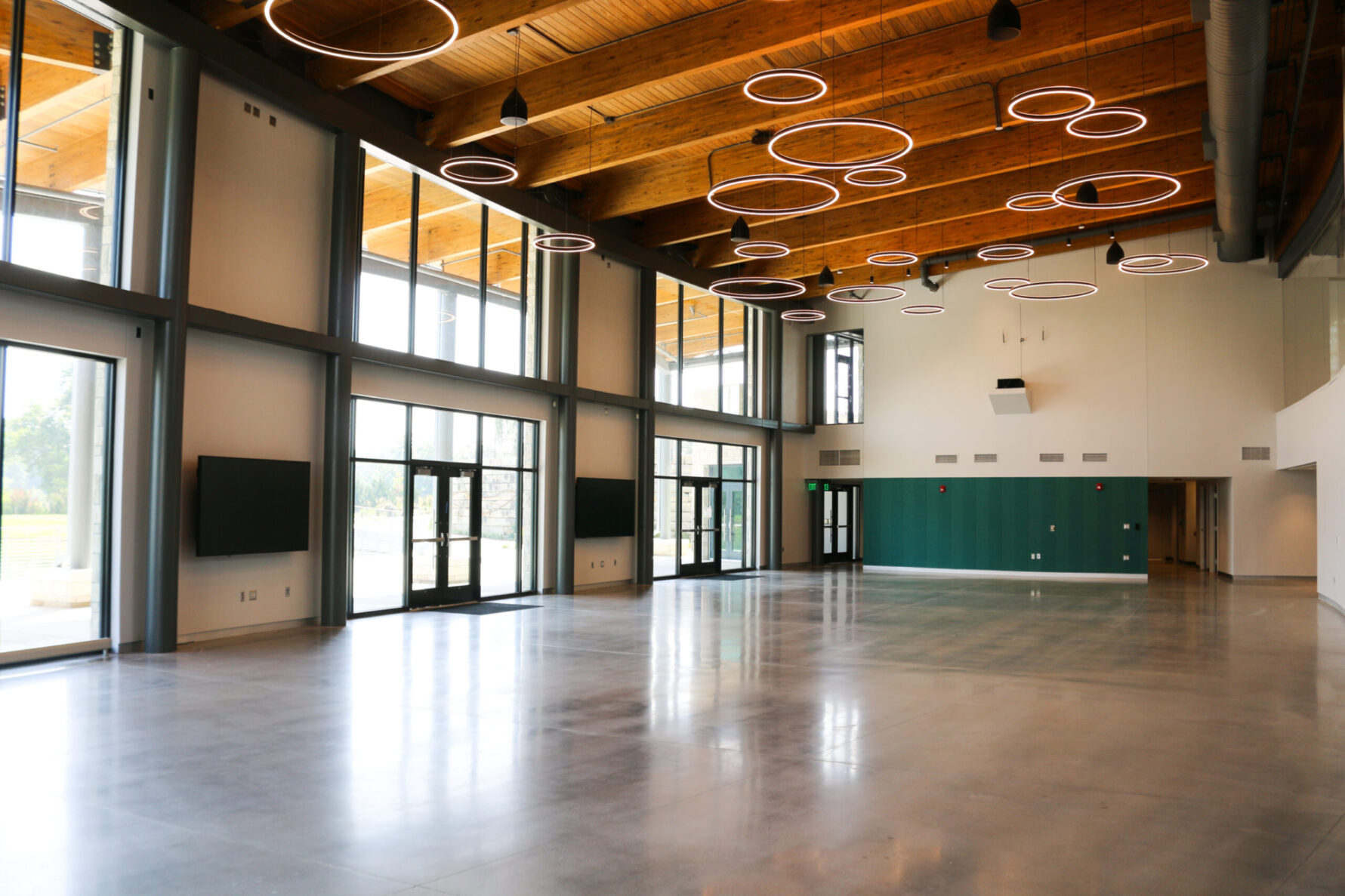Green Buildings in Kansas City

Our Commitment to Sustainability in Construction
Contractors play a crucial role in translating the sustainable choices made during the design phase into a successful building project. At McCownGordon Construction, we are continually evolving our sustainability approach and making advances in areas where we can provide the most impact. Whether the project owner is seeking formal certification via one of the Green Building Standards available on the market, or simply to know their building will be satisfying ever-increasing Building Code efficiency standards, we provide guidance and resources to construct green buildings in the Kansas City region and beyond.
Our commitment includes:
- Discussing your goals up front and how we can help achieve them
- Recycling applicable waste streams and providing diversion routes
- Upgrading on-site trailers continuously to reduce energy consumption
- Training staff to ensure all can knowledgeably apply sustainable concepts
- Integrating with the design team early through our Building Performance Solutions MEP Services team to provide system-level analysis and optimization
Why sustainability in construction matters
To accommodate population growth and continued shifts to urban living, the world’s building stock is expected to double between now and 2060. That’s the equivalent of building an entire New York City every month for the next 40 years! Each construction project has a lasting impact on the environment. Every aspect of construction has a measurable impact—product stage, construction process, use stage, and end of life stage.
According to the UN Environment Program, the building and construction industry accounts for 36% of global energy consumption. Subsequently, it accounts for about 40% of the global carbon dioxide emissions. Improper disposal of hazardous and demolition waste also has a negative environmental impact. It has been a goal of many building and construction companies to focus on sustainable construction in the face of increasing urbanization and industrialization. This means proper disposal protocols and thinking environmentally from start to finish.
McCownGordon’s green building promise
Every project we undertake begins with an upfront conversation to understand client goals and how we can achieve them. Whether your goal is to provide a measurable level of carbon footprint reduction, or simply to limit the environmental impact of construction, we are here to help you reach your environmental, social and long-term building goals.
We believe in proactively educating clients on strategies to reduce their environmental footprint. We also advocate for solutions that improve overall performance while constructing buildings responsibly. As part of our customer experience, we are committed to exploring the wide range of options available to reach your specific goals.
In addition to helping our clients meet their sustainability goals, we have a few commitments of our own:
- We are committed to recycling applicable waste streams on our job sites, regardless of whether it is required by a formal certification.
- We continuously work to upgrade our construction trailers so they will have a lower environmental footprint from their various systems.
- We are training the entire McCownGordon staff, across all our office locations, to knowledgeably apply sustainability concepts in their work.
Early integration of sustainable practices
The sustainability experts within our engineering services group integrate with the design team early in the project lifecycle. This allows us to give early feedback on efficient systems from an energy perspective, carbon perspective, or whatever is needed to achieve the client’s desired certification.
Even when the project owner is not seeking any official certification for sustainability, they generally understand the many benefits of incorporating sustainable green building processes and design themes whether it’s to create a better employee environment or simply reduce utility bills. McCownGordon’s sustainability team works with the design team to set energy, greenhouse gas, and waste goals.
From the earliest phases of a project, our sustainability experts analyze specifications from the engineering or architecture teams. These narratives describe the systems they are looking into for the building. We provide feedback on the specified systems, letting the engineering or architecture team and owner know if their choice would be a good fit from a budget, constructability and energy efficiency perspective while also providing possible alternatives.
The sustainability team works alongside the design team to provide feedback based on a variety of factors. These include our knowledge of trade partners in the area, their capabilities, and what has historically performed well in similar buildings and regions.
As the design progresses past those early schematics into the construction document phase, we enter a drawing review session with the design team to provide feedback from a design and a constructability perspective. With our “extra set of eyes,” we can help to better achieve the goals set out by the client while making the project constructable and efficient in the field.
Sustainable contracting practices
While sustainability during design relates to choosing systems, selecting materials and looking at energy models, the construction phase switches to a focus on implementation. Aspects include recycling and tracking waste diversion rates, writing and incorporating an indoor air quality plan for construction to ensure a safe environment for workers, and writing and incorporating the waste management plan.
When construction is completed, the construction manager and commissioning team fine-tunes the building systems to ensure optimal performance for the project owner.
Green buildings and embodied carbon
For many years, high-performance green buildings in Kansas City and across the world have focused on reducing operational carbon—carbon generated by building utility use during its lifetime. Increasingly, awareness of embodied carbon—the carbon footprint inherent in the production, installation, and eventual demolition of materials and assemblies used in construction—has come to the forefront of the industry drive to Net Zero buildings.
Reducing material use is a key strategy to reducing embodied carbon
A holistic discussion surrounding construction techniques, and even end-of-life impacts, should be the goal for anyone seeking to reduce embodied carbon. Your design and construction team should be prepared to set a baseline carbon budget on a project and talk through options for percentage improvements. Some options to discuss include:
- Is a new ground-up building required?
- Can you renovate or add onto an existing building in order to achieve the same goal?
- If new construction is required, is the team able to provide a Whole Building Life-Cycle Analysis (WBLCA) to quantify the carbon footprint of an optimized design?
- Can we modularize the project to create less of an impact in the field?
- Can we design for deconstruction at the end of life?
Through early involvement of all parties—ownership, designers, builders, and trade partners— you can achieve the sweet spot of sustainability, economy and design. You can also achieve traditional pillars of structural design—robustness and redundancy. Engineers and builders should design their structure to work hard in the areas it needs to work hard—and to be efficient elsewhere.
Retrofit your existing building
Retrofitting existing buildings to be more sustainable is a common undertaking for McCownGordon. For example, we can replace air handling equipment with more energy efficient equipment that meets current building code standards. This service ensures compliance and reduces owner costs without needing an entirely new green building.

Green building rating systems
Building standards are constantly evolving as the industry itself changes—and as the world changes around it. General building code standards have become much more robust, and would be equivalent to what would have been a base level certified building 20 years ago. This ensures the entire industry progresses, while those with the available resources can go above and beyond to incorporate the stricter initiatives necessary for today’s green building rating systems.
Leadership in Energy and Environmental Design
The U.S. Green Building Council’s (USGBC) Leadership in Energy and Environmental Design (LEED) is the most widely used green building rating system in the world. They certify more than 1.85 million square feet of construction space each day. LEED certifications provide independent verification of the building’s green features. The incentive of this leads to the design, construction, operations and maintenance of resource-efficient, high-performing, healthy and cost-effective buildings.
Through LEED projects, organizations divert more than 80 million tons of waste from landfills. LEED Gold buildings within the General Services Administration’s portfolio consume a quarter less energy and generate 34% lower greenhouse gas emissions. Furthermore, LEED-certified buildings directly contribute tens of billions of dollars into the US GDP.
What are the benefits of LEED certification?
The main benefit of LEED certification is verification that your building is efficient and healthy, creating an optimal environment for occupants. There are, of course, various more tangible benefits. For starters, people are generally familiar with LEED certification and what it says about any LEED-certified space. Most corporate leaders agree that sustainable practices lead to market differentiation and therefore improved financial performance. The Microsoft campus in Silicon Valley is a great example of sustainability and creation of a space intended to benefit and restore the natural area.
There are benefits for the people who live and work in LEED-certified buildings, too. LEED-certified buildings demonstrate better recruitment and retention rates among the employees who work there, due to better indoor environmental quality. This is true across industries, from schools to hospitals, hotels, offices, and more. Tenants are also more likely to choose LEED-certified spaces for living, with green buildings in Kansas City and around the country experiencing lease-up rates up to 20% above market average.
Green Globes®
The Green Building Initiative is a nonprofit organization—and American National Standards Institute (ANSI) Accredited Standards Developer—dedicated to improved building performance and reduced climate impact. They facilitate the Green Globes®, a comprehensive and science-based rating system that supports a wide range of new construction and existing building project types. Green Globes® certifies any projects that meet 35% or more of the 1,000 points deemed applicable to the project. By now, Green Globes® has been adopted by the federal government for most buildings, and Federal Guiding Principles are offered under the GBI umbrella.
Green Globes® uses an assessment process intended to mimic the design and construction schedule for new construction. The assessment process helps facilitate a seamless certification. This process meshes well with McCownGordon’s approach of integrating our sustainability experts as early as possible into the design phase. Through early integration, we prevent time-consuming and costly project changes. Green Globes® serve as a benchmarking tool to evaluate current performance and to guide improvement for existing buildings as well.
What are the benefits of Green Globes® certification?
Green Globes® certification process ensures:
- Energy conservation
- Lowered water consumption
- Responsible use of materials
- Efficient use of project team time
More and more people are educating themselves on sustainability and humans’ impact on the environment. As a result, the public knows green buildings in Kansas City need their claims backed by scientific evidence. Green Globes® certification confirms an unbiased, third-party organization verified your building’s sustainability.
WELL certification
In late 2014, the International WELL Building Institute (IWBI), working with the Green Business Certification Inc (GBCI) launched the first rating system that incorporates different types of measures for the advancement of human health and wellness in buildings. These institutes administer the WELL Certification process and WELL Assessor credentialing program. WELL standards were developed by including medical and scientific research on environmental health, health outcomes, behavioral factors, and more.
WELL v2
Four years after WELL launched, the standards were updated with the purpose of providing equity and reducing the entry barriers for sustainable building, while keeping their rigorous environmental standards.
How it works
WELL includes 10 concepts and more than 100 features. Concepts require 23 preconditions to be met while offering 94 optimizations to score needed points. The scoring is similar to LEED with certification levels including: Certified, Silver, Gold, and Platinum.
Fitwell standards
Fitwell was introduced a couple of years after WELL. This rating system focused on the health of employees and creating a healthy workplace. Designed by the Center for Active Design, Fitwell is expanding quickly thanks to communities and individuals who are interested in creating public and private spaces that offer a healthy quality of life.
How it works
Fitwell provides a tailored scoreboard for a variety of building types, including multifamily, retail, community, and workplace. It includes more than 55 strategies to address a vast range of health risks and behaviors to enhance building health. Each strategy has a certain amount of points based on the strength of its impact. Certification levels include 1 star, 2 stars, and 3 stars.
McCownGordon Construction is your green building expert in the Midwest
While certification from a green building certification system is a start, the green design community knows that once it’s built, we have to track how it performs. The goal is to create a pathway to Net Zero energy buildings.
At McCownGordon, our team maintains a customer-focused mentality, allowing us to meet or exceed even your highest expectations. Dedicated to promoting integrity, performance and relationships, it’s our people and values that truly make the difference. Our commitment is to develop more green buildings in Kansas City and throughout the entire Midwest.
Our customers aren’t simply another project; they’re an extension of our team and community. Together, we don’t just build—we bring creative visions to life. From first thought to final nail, we deliver quality work to ensure our builds stand above the rest.
We have three regional offices around the Midwest—Kansas City, Manhattan and Wichita. Call us at 888-304-4929 or use our free online quote tool to start building today.




